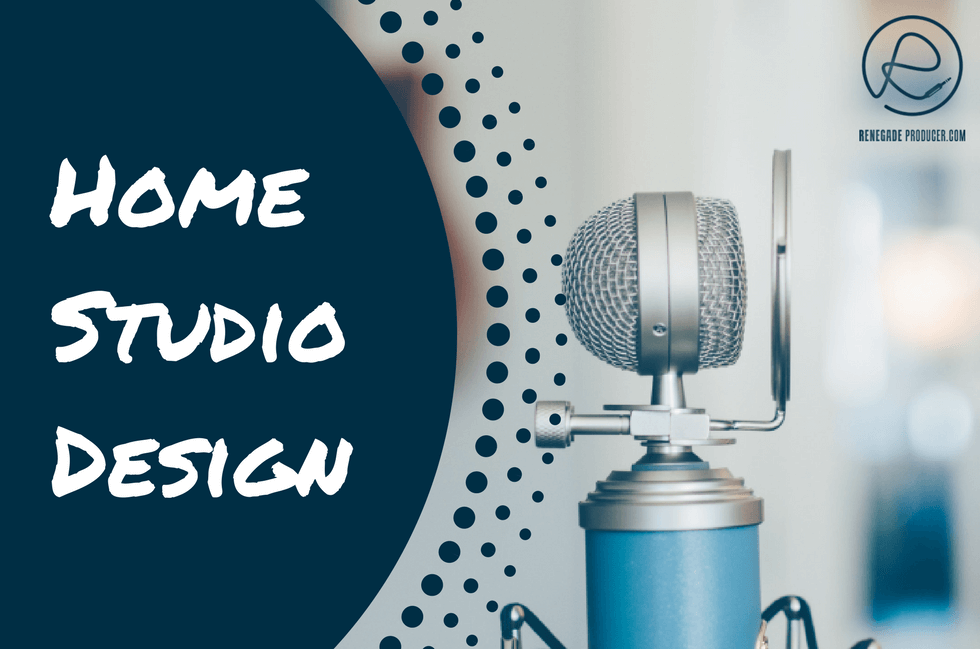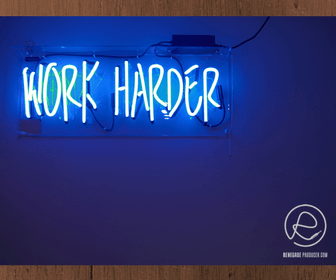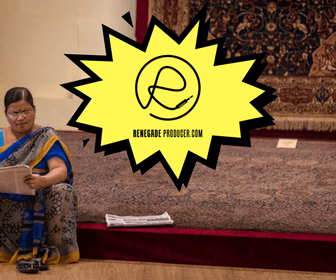25-step music production process checklist and video workshop >>>
3 Essential Home Studio Design Considerations for Music Producers & Beatmakers

Time to get your new studio up, running and open for business? Make sure you read this introduction to the three main considerations to keep in mind as you plan and budget for your home studio setup...
This post takes a look at the main home studio design factors you need to ponder over in order to make sure you get the most out of your home studio in terms of form and function. Your main focus, as you can imagine, must always be how your room sounds. It's a studio after all! That's not the only thing to keep in mind though. Read on below to discover the rest!
#1 Acoustics
How your studio sounds is your most important home studio design consideration. Let's take a look at the ABC of a home, bedroom or project studio that sounds good enough to mix your tracks in.
Yes, a studio, as you can imagine, is always all about sound first.
If you cannot hear what you're doing, you're probably doing wrong.
So, the first and vital thing to get right is your acoustics.
Three factors play a role here:
A. Physical Aspects of Your Room
If
you are doing a custom buildout you can control the size, dimensions,
building methods and building materials to eliminate acoustical issues
from the get-go. You don't have control over these factors when you
need to use an exisiting room as most of us will.
A room-mode calculator
can give you a good indication of which frequencies could cause issues
in your room. Just don't ask me how to decipher it for you! ;-)
General tips:
- Use the largest room you have available.
- Avoid square rooms if possible.
- Think about outside noise. The less noise the better. Thicker walls = better!
B. Placement and Positioning of Your Monitors
You may like the view out the window, but home studio design is all about sound first. So, your main question should be:
Where does it sound best?
Now, you could get into measurement mics and acoustic analysis software at this point if you want. Have fun! ;-)
Alternatively, just use your ears! How? Simple:
- Start with your empty room. Now add just a way to play back music and your monitors.
- If you have a friend handy to help, now's a good time to let them out of their cage to assist you.
- Sit in one position and play a track you know extremely well.
- Now have your friend move the monitors and listen.
- Keep moving your monitors until you find the best spot. That's your starting point.
Once you have the best listening position, leave your monitors where
they are, mark the positions and do the rest of your studio setup
around your monitors.
General tips:
- Get your monitors as far away as possible from wall.
- Keep your monitors out of corners.
- Experiment with the distance between your monitors.
C. Acoustic Treatment
Acoustic
treatment can help you tame a room a bit. The main issue in smaller
studios will be bass and lower-mid frequencies that can lead to a host
of problems. Studio foam will not help in this case, as it absorbs only
higher frequencies.
Certain bass traps can help a bit in the lower ranges and acoustic panels can be useful to temper the mids.
I won't expand too much here as I've covered this for you in a previous post about room acoustics.
#2 Ergonomics
The next home studio design consideration is how your body interacts with your studio. It's time to think about your chair, desk, controller, gear and computer monitors and how best to position and use these items for optimal workflow with minimum strain:
The ideal scenario is one where you minimize the physical strain caused by spending hours on end in your studio. This helps you prevent RSI and other strain-related long-term injuries.
This of course needs to
combine with your needs in terms of function and workflow. You want the
gear or instruments you use the most at arms-length.
Things to think about:
- Desk Type & Height
- Chair Type & Height
- Gear Position/Storage
- Mouse Type & Position
- Monitor Height
This article on home studio ergonomics is a decent place to start your home studio design research.
#3 Aesthetics
The mood or vibe is often an overlooked factor in make-do smaller home or bedroom studios. Music, as you know by now is all about mood. A few small touches can transform the mood in your studio to one that's conducive to making magic.
Your own personal taste and style will of course guide your aesthetic choices in the studio.
Here are a few ideas to consider:

1. Lighten Up
Cue the studio lava lamp!
Cliche's aside, lighting makes a massive difference to your studio vibe, at very little cost.
So,
whether your thing is lava lamps, pink salt lamps or LED strips that
change color. Get them in there and create the mood you want.
It's a good idea to get all your light controls near your work position so you can adjust as needed from your workstation without getting up.
Keep in mind that you want to have options in terms of the overall brightness in your studio. At times you need to install, remove and clean stuff in which case a brightly-lit studio is your best friend. Other times you need to work and need light, other times you need a creative vibe. Create different lighting setups to satisfy all these needs.
2. Keep It TidyCan someone say cable management?!
Yes, a tidy studio is a happy studio.
Slay the sloth and invest in cable management systems, cable ties and even good old gaffer tape.
See this article to get your organizational juices flowing.
Also, have dedicated spaces for food and drink (not on the console, mate!) and client items.
3. Couch Party
Do you have some space in the back? A sofa isn't just there to keep clients happy. It also serves an essential function at those time when you need to go full Rick Rubin, Superproducer Mode. Make it plush, make it huge and above all make it comfy.
A good couch will serve the double function of alternative listening spot and extra absorption. So, ignore this essential cool home studio interior design advice at your own peril. You've now been warned.
Consider the couch!
|
4. Rugrats We may not have the budget yet to splash out on some genuine Persian carpets. You should probably get some kind of rug for your studio, especially if you have hard reflective floors. Yes, not only can a nice rug or two make a
world of difference aesthetically, it also tames higher frequencies to
lessen reflections from the floor. Opt for a thinner rug so your fancy
ergonomic office chair can still wheel over it. |
 "What a bunch of hype!" "What a bunch of hype!" |
5. Personal Touches
A few personal knick-knacks, figurines, awards or memorabilia can add your personality and charm to your room. That said, try not to clutter up a space meant for work too much. This is especially true if you plan to open your studio to the punters.
A few nice framed prints are another good way of injecting your style and flair into your studio. They also have an added bonus as they break up flat wall surfaces which may diffuse sound more and create a smoother response. It may be slight but every little counts.
In Closing:
If you, like me, spend or plan to spend a lot of time in your home studio, then you realize that it has to be a place where you can work hard and not get worn down. Spend some time on the above 3 home studio design considerations to make sure you get the sound, functionality and vibe of your studio down.
Send me a pic!
P.S. Don't forget to stay updated...


Learn to understand equalisers and frequencies to supercharge your mixing skills and get results, fast...

New producer? Learn everything you need to produce your first professional track right now...

Would you like to discover the simplest and easiest way to learn music theory as a music producer?
Share this post. Spread the knowledge so other producers can benefit too:
- Renegade Producer
- Home Studio
- Home Studio Design Tips
ⓘ Some pages contain affiliate links so I might earn a commission when you buy through my links. Thanks for your support! Learn more



